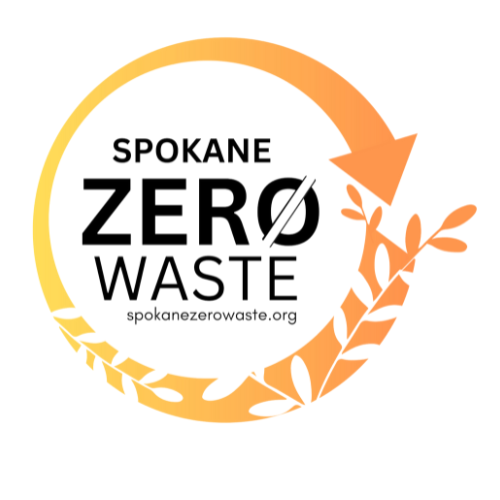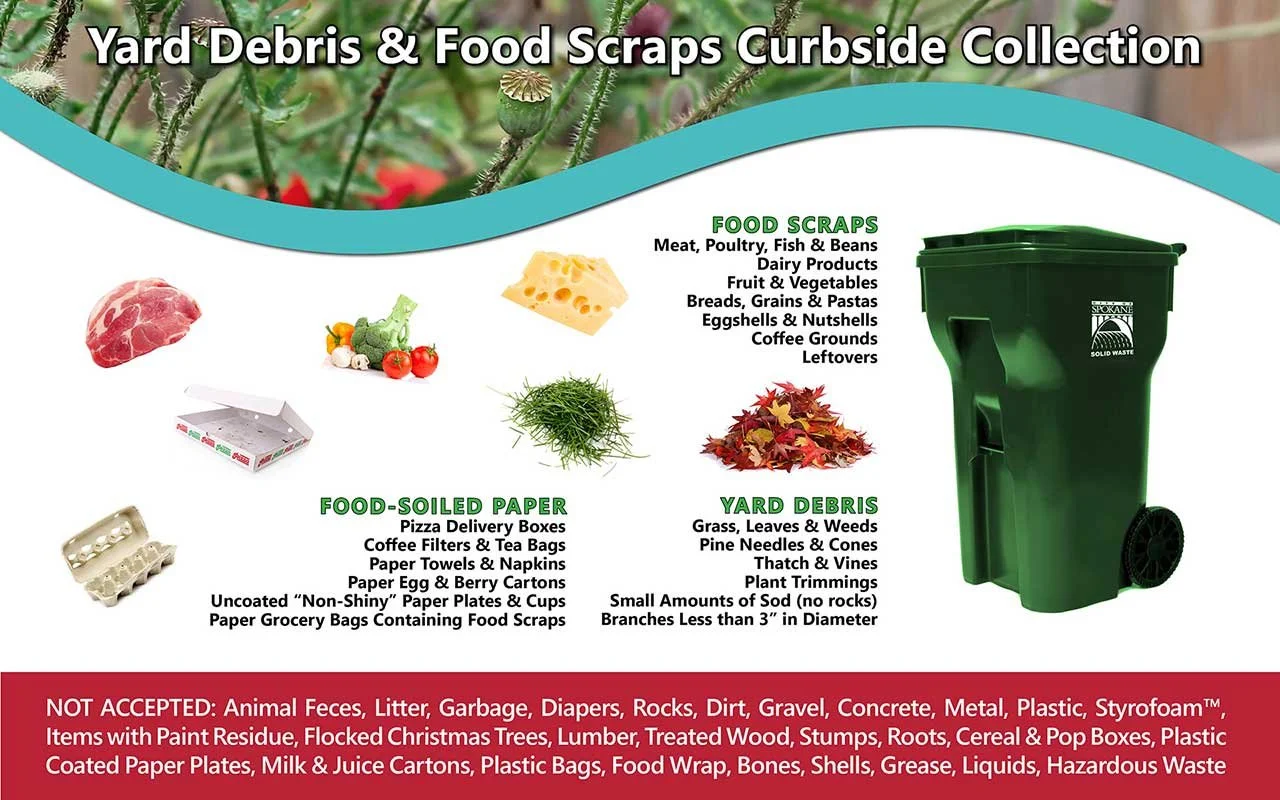Nov Newsletter
A Truly Zero Waste Feast: How to Plan a Thanksgiving Meal Without the Trash
By Rebecca Fulton
Thanksgiving may be the most food-focused holiday of the year, which makes it one of the most wasteful — but also one of the easiest holidays to make more sustainable. With a little planning, you can host a feast that’s memorable for your guests, not the garbage bin.
Plan With Precision (Portions Matter!)
Avoid overestimating — it’s the biggest source of food waste. Use this cheat sheet:
Turkey: ¼ to ½ lbs/person
Sides: ½ to 1 cup per side
Pie: 1 pie = 8 servings
If your group likes particular dishes more than others, adjust portions accordingly. (If Aunt Linda eats an entire pie herself every year, you already know what to do.)
Shop With Less Packaging
Bring jars and cloth bags for bulk items
Buy loose produce
Visit farmers markets
Ask your butcher for paperwrapped turkey
Cook Smart: Cross Use Ingredients:
Before adding a dish to your menu, ask: What else can I use these ingredients for?
If the stuffing needs onions, the green beans need onions, and the gravy needs onions—great. Buy a big batch and use every bit.
Beets → the greens from the tops can be used in a salad.
Potato peels → crispy snacks.
Everything can find a purpose.
Serve Family Style:
Reduces waste and lets everyone choose their portions.
Prep for Leftovers
Set out reuse-friendly containers before dinner so guests know they’re welcome to take food home. Encourage them to BYO containers if you want to go truly zero-waste.
Across America 320 million pounds of food worth 550 million dollars which could provide approximately 267 million meals, will go to waste this Thanksgiving.
The emissions associated with Thanksgiving is approximately 811,726 metric tons of carbon dioxide equivalent, which is about the same as driving 190,000 gasoline-powered vehicles for a year.
The amount of methane produced in the landfills from this waste is similar to what is created to power 280,000 homes.
Of those emissions, 4,800 metric tons of methane alone come from sending that food to landfill, which is similar to what’s emitted by powering 28,000 homes’ electricity for a year.
About 39 billion gallons of water was used to produce the food that will be wasted this Thanksgiving, enough to fill more than 59,000 Olympic-sized swimming pools.
Source article about Thanksgiving Food Waste
Décor That Doesn’t End Up in the Bin: Natural & Reusable Thanksgiving Centerpieces
By Rebecca Fulton
Forget glitter covered plastic décor — nature gives you everything you need for a warm, elegant table.
Start With What You Have
Mason jars, old candles, fabric scraps, books, baskets — your home is already a treasure trove of cozy accents. Chances are you already own items that create warmth and texture.
Use Natural Elements
Nature is endlessly stylish—and compostable:
Branches or twigs in a vase
Foraged leaves scattered along the table
Pinecones, acorns, chestnuts
Mini pumpkins, squash, or gourds (cook them later!)
Citrus slices dried in the oven
Mix and match textures for a rich, earthy look.
Candles With Intention
Use candles you already have, or thrift candle holders for a timeless look. If you buy new ones, beeswax or soy options are better for both air quality and the planet.
Think Reusable
Cloth napkins, thrifted plates, real glassware—these elevate your table and avoid waste-heavy disposables.
Make It a Tradition
Create a “Thanksgiving Décor Box” to reuse each year. Everything inside becomes part of the holiday story—and your table becomes more meaningful over time.
Sustainable Hosting: How to Reduce Waste When You Have a Full House
By Rebecca Fulton
Hosting Thanksgiving can be joyful chaos. It also tends to involve a mountain of dishes, a flood of guests, and a temptation to reach for disposable everything. Here’s how to stay organized and low-waste without feeling overwhelmed.
Use What You Already Have
You don’t need perfectly matching place settings. Mismatched plates are charming—and they reduce the need for single-use options.
If you don’t have enough:
Borrow from neighbors or guests
Mix in thrifted pieces
Rent dishware (great for large gatherings)
Create a DIY Drink Station
Set out:
Glasses (or jars!)
A large jug of water
A small selection of drinks
This avoids a pile of single-use bottles and cans while freeing you from constant refills.
Label Cups or Glasses
A simple trick that cuts dishwashing in half:
Tie twine, washi tape, or paper tags to write names on to glasses so guests can keep theirs all day.
Minimize Food Waste with Smart Serving
Serve sides in smaller batches and refill as needed.
Place leftover containers near the table with a “Help Yourself!” note.
Ask guests to bring their own containers if you plan to send food home.
Set Up a Simple Waste Station - Make it clear and easy:
Label each bin. Guests want to do the right thing—they just need guidance.
Recycling
Compost
Trash
Recycle Right!
Spokane uses a single stream recycling system, allowing for convenient, efficient services.
Food & Yard Waste Collection
Food Scraps: Meats, dairy products, fruits and vegetables, breads, eggshells and nutshells, coffee grounds, and tea bags.
Food-soiled Paper: Pizza boxes, paper towels & napkins, non-shiny paper plates and cups, paper egg cartons, paper grocery bags with food scraps, and coffee filters.
How to Talk About Sustainability at Thanksgiving (Without Killing the Vibe)
You want to inspire, not lecture. Here’s how to keep it positive.
1. Lead by Example
Let your low waste setup do the talking. Serve the delicious low-waste meal. Use real dishes. Set up the compost bin. People notice—and they’re more likely to ask questions naturally.
2. Share Stories, Not Stats
Personal stories resonate more than facts. Try: “I started composting this year and it cut my trash in half—it’s weirdly satisfying.”
3. Answer Questions Lightly
When someone says, “Wait, you made this all zero-waste?” You can respond with: “Yeah! It wasn’t as hard as I expected—want to see a few tricks?” Keep it short and friendly.
4. Offer Simple Starting Points
Reusable bags, freezing scraps, stockmaking — small wins matter. If someone expresses interest, give them a simple starting point: “Try freezing veggie scraps for stock.” “Bring reusable bags to the store—it’s a super easy first step.”
5. Don’t Force It!
If the vibe shifts, pivot. Thanksgiving is about connection, not converting anyone.
6. Celebrate Small Wins
If your cousin used a cloth napkin for the first time? That’s a win. If your dad brought a reusable container for leftovers? Another win. Creating a welcoming, positive atmosphere encourages curiosity. Sometimes the best way to inspire change is simply by hosting a warm, joyful, low-waste celebration. Every step counts.
Don’t let these ideas overwhelm you. Pick a few things you can accomplish this season and build on those next year. Small actions can lead to big change over time.
SZW works for change at the systemic level.
The responsibility for change around waste does not just rest with the individual. Our local leaders need to create programs that responsibly handle food waste at all levels of society including places like assisted living centers, schools, businesses and at events.
A child at a school has no control over where leftovers go, a memory care resident can't be expected to only take what they will eat, and a person at an event with only trash cans can't choose to keep compostable or recyclable items out of the waste stream. These situations and others need new systems.
This year Spokane Zero Waste (SZW) modeled a better way to handle waste with our Aim for Zero initiative at the monthly Night Market & Street Fair held in front of the Catalyst building. We worked with event creator Alena Horowitz to provide food vendors with a list of serviceware options that are compostable at our local industrial composter, Barr Tech. Then SZW volunteers set up Aim for Zero waste sorting stations during the event where they helped people separate their trash into bins marked: compost, recycle, and trash.
By managing materials used we helped stop waste before it was created while our waste sorting stations took care of downstream waste ensuring it made it to its proper destination uncontaminated. All in all this pilot project created conversations about waste with the nearly 5000 people who attended, collected 412 pounds of food waste which was sent to Barr-Tech, and 103 pounds of recyclables. This pilot project proves with a bit of effort we can create systems that reduce waste effectively.
Want to see our Aim for Zero waste stations at your favorite outdoor event? Contact us at info@spokanezerowaste.org
Upcoming Classes
See our Classes page for details and more!!









